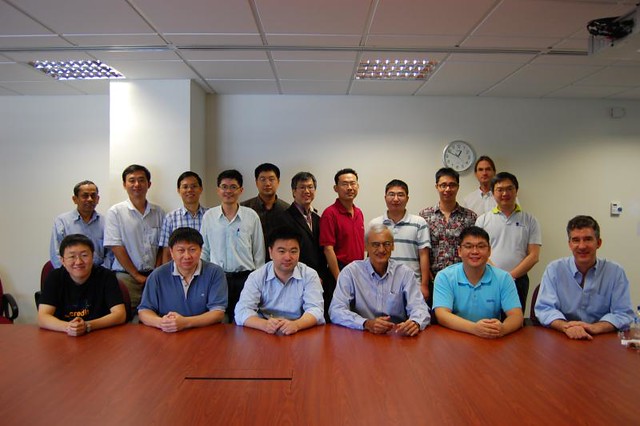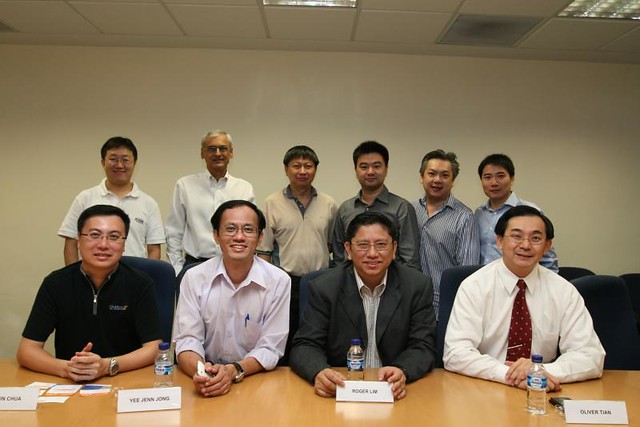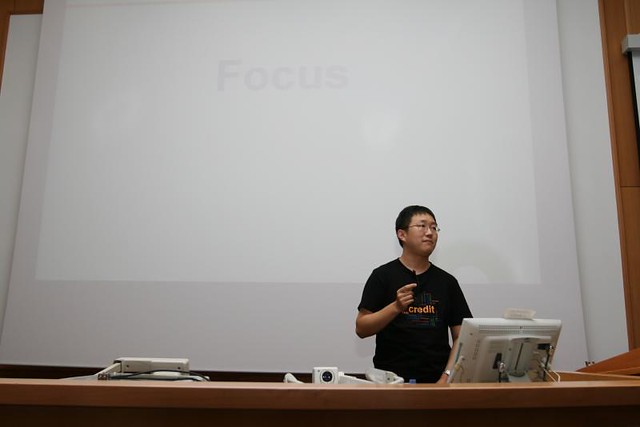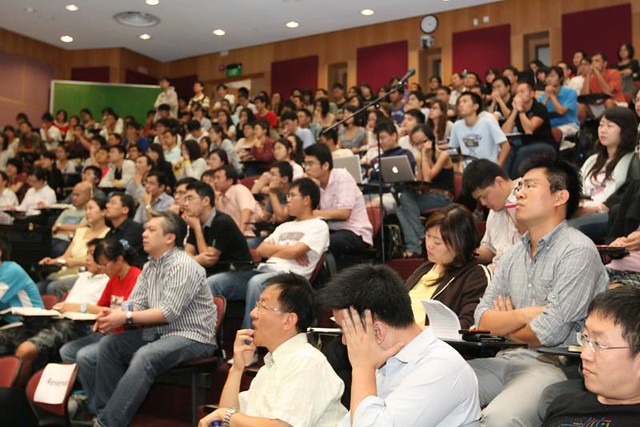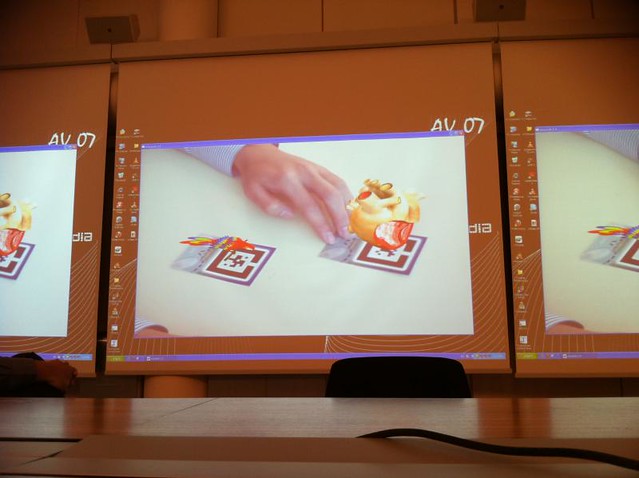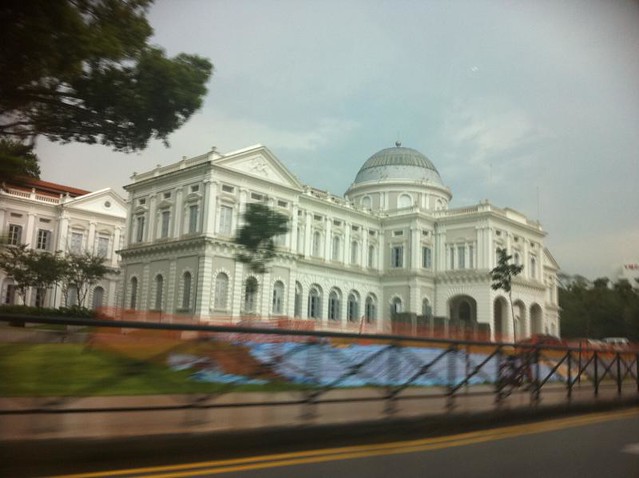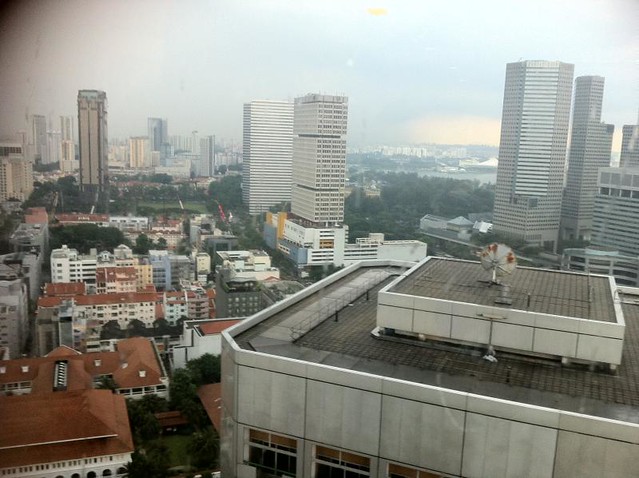I joked with Prof. Juzar on the way to dinner, that I found myself on the campus of a big company called “Singapore Pte Ltd” these days. Some people joked that the president of China acts as CEO of China Limited Corparation. I felt more so in Singapore. I formed the impression from the interaction with the government agencies, universities, and private sectors, and some ideas comes from the autobiography of Lee Kuan Yew.

The National University of Singapore campus
It is obvious to me that the whole Singapore acted as one single company. The government, the universities, and the private sectors worked so well, just like the different teams in a big company. Universities can be the HR department, while the government can be the legal and finance depart, with the private sector act as R&D, and business develop organization.
One example is the way they acquire talent. In the lecture this afternoon, Prof. Tan asked how many students are Chinese. About 70-80% in the room raised their hand. I asked Prof. Tan what is the definition of Chinese students, he said, they are very likely to be from mainland China. After chatting more on this topic, I understand that the Singapore government sponsors the university to offer full scholarship to the students to attract them to study in Singapore (most of them are the best from the Tsinghua, Peking or SJTU). Most of the students stayed in Singapore, and contribute to this newly emerged economy. Think about it. It is just like the scholarship and internship program we are trying to run on campus – but Singapore is running it as a country.
From the different organizations and programs, I can feel the passion the government is trying to foster entrepreneurship. Developing the people is one of the four key strategies for iDa (Infocom Development Agency), and the key driver for School of Computer in National University of Singapore, and very likely to be key strategy for all universities here.
Take the workshop of this afternoon. The NUS sponsored the air-ticket and the hotel for the panels from Shanghai. What an effort! If the conference can help to accelerate one successful entrepreneurs out of the audience, that quite pays back everything.
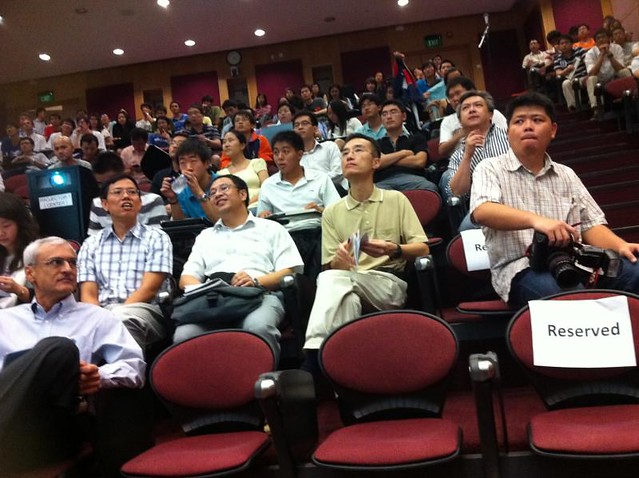
From the autobiography of Lee Kuan Yew, they are using this effort to attract few hundred best students from around the world. Not a big number, in China scale (well, in China, people are talking about students in terms of million), but it is so critical for Singapore, especially when we consider the quality of the people they attract.
Obviously, Singapore has a clear strategy to attract and keep the world’s best talents. How about China?
P.S. The workshop went on very well. I enjoyed the conversation, and impressed by the sharp questions people asked. In case you are among the audience, and we didn’t have a chance to exchange name card, you can find my contact information on the right side of my blog homepage.
P.S. 2. During the presentation, prof. Tan quoted two “Singapore styles” – one is using mixed language to present the talk (English or Chinese or combined), and the other one is to keep the order by queuing after the microphone. If a country or company formed certain style that people living within can recognize and actively promote it, it is called a new culture.
